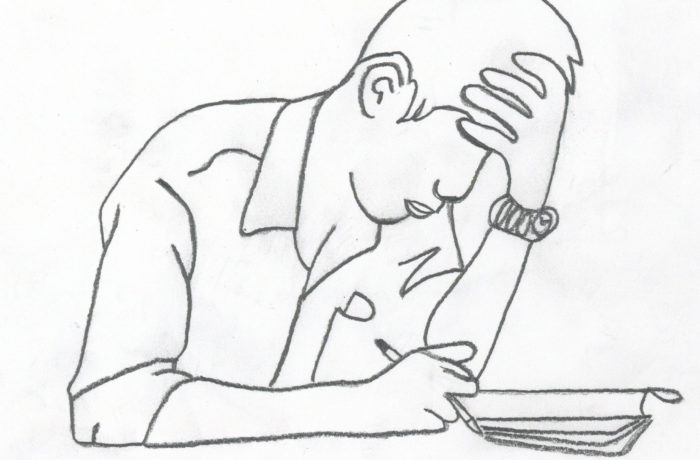By Garret Finn
Renee Brault, the head athletic trainer at St. Michael’s, said that concussions have been increasingly prevalent throughout her career in the field. She said that she thinks this is because more and more people know about how seriously concussions need to be taken. This year alone, she estimated that her staff has seen over 30 concussions, but does not have the exact tally because the number increases so frequently.
A concussion is a mild form of a Traumatic Brain Injury, or TBI, and occurs when someone’s head sustains an impact hard enough to move the brain in an unusual way inside the skull. Because of the complexity of the human brain, all concussions are different, and the effects vary widely based off the way that the head is impacted by the blow.
Illustration by Liam Rademacher

“A concussion in scientific terms is when there is some force that is exerted on the brain and neurons undergo, or are exposed to, mechanical deformation that can in severe cases lead to severing of axons of neurons, of processes that come off the neurons,” said Ruth Fabian-Fine, a professor in Neuroscience at St. Michael’s. She explained that that although awareness of the effects of concussions has grown, people still do not realize how fragile the nervous system is. In cases where the force is mild, although there may not be any severing of the processes of neurons, there can be some swelling in areas of the brain. This swelling can cause neurons to press against the foramen magnum, causing them to no longer function, so it is important that someone allows the swelling to go down in order for the area to heal before risking another head injury.
Suffering more than one concussion puts someone at risk of a number of diseases, including Chronic Traumatic Encephalopathy, or CTE which makes someone prone to depression among other emotional instabilities. It is essential to treat a concussion correctly for the brain to heal, but mismanaging the recovery can lead to a string of problems. After suffering a concussion, the best thing to do is reduce cognitive exertion, until the symptoms are gone to allow the brain to recover fully from the trauma.
A mild concussion can lead to a series of symptoms that occur directly after the blow, or in some cases take some time to set in. These symptoms may include headaches, nausea or vomiting, or a hazy feeling. More serious concussions can lead to loss of consciousness on impact, and can cause all of the symptoms listed to intensify.
For most concussions among athletes at St. Michael’s, treatment includes an on average seven to ten day healing process followed by a five day return to play policy. That sometimes frustrates athletes, but Brault said she and her staff know that it’s necessary to implement policies like this one to prevent lifelong damage.


